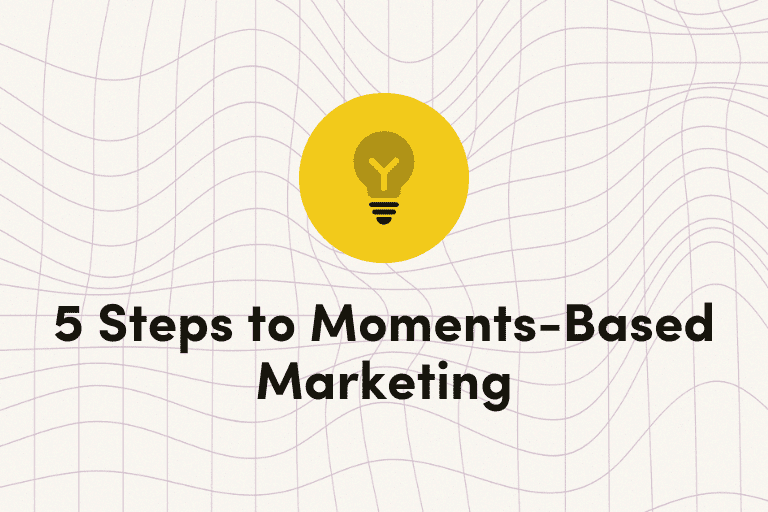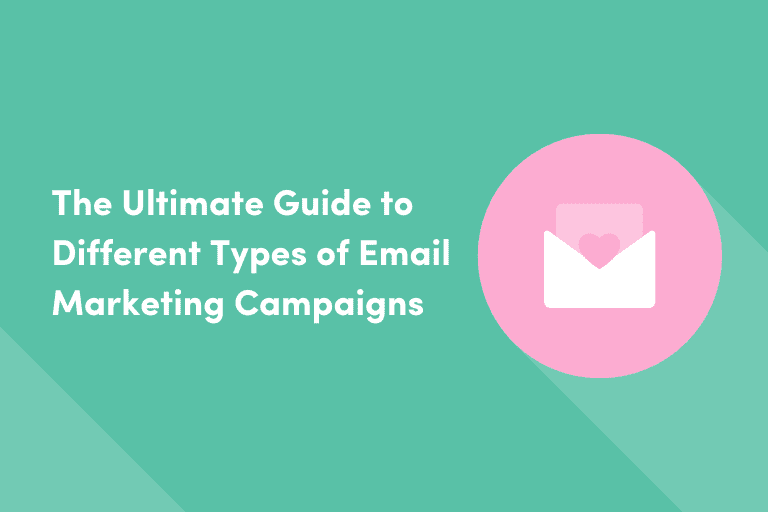With half of marketers declaring that email is their most impactful channel with automations generating up to 30 times more revenue per recipient, email marketing remains one of the most effective ways to reach, engage, and convert customers.
But before marketers start sending without a strategy, it’s crucial to understand the various types of email marketing campaigns to utilize their full potential.
This guide delves into the different types of email marketing campaigns, their essential ingredients, and best practices to go beyond the basics and maximize their effectiveness—so you can land in the inbox making the biggest impact.
Want a deeper dive into these various email marketing campaigns? Check out our resource library of Unboxing Guides, where we walk you through the customer journey from welcome to re-engagement.
7 Different Types of Email Marketing Campaigns
1. Welcome Emails
Purpose: To introduce new subscribers to your brand and set the tone for your customer experience.
Essential Ingredients:
- Introduce and establish your brand identity with the same gratitude and appreciation like you would if you were meeting in person.
- Manage expectations of what new subscribers will receive after joining your mailing list.
- Orient and guide users with important onboarding information.
- Prioritize key next steps with specific calls to action.
Best Practices:
- Make sure to dynamically personalize content by importing relevant personal account or customer details.
- Create context-sensitive versions based on the source of signup or mode of email address acquisition, such as completing a first purchase or clicking a paid ad.
- Design with a cross-channel mindset by including invitations to download your mobile app or connect on social media.
Welcome emails should feel like a warm greeting, and failing to send one is the digital equivalent of ghosting your subscribers. Start with a friendly tone, thank the subscriber for joining, and consider offering a special discount or freebie as a thank-you gesture for becoming a part of your brand’s community.
2. Onboarding Emails
Purpose: To solidify channel engagement, grow customer loyalty, and prompt first or repeat purchases.
Essential Ingredients:
- Orient newcomers with a series of onboarding emails to communicate a benefits roadmap.
- Gather self-reported data by incentivizing users to complete their profiles or customize their email preferences.
- Enable behavioral profiling by analyzing clicks and conversions to tailor future messages.
Best Practices:
- Set the stage upfront by labeling each email in the onboarding series, so subscribers know what’s coming and for how long.
- Offer step-by-step training for account setup, platform capabilities, or other important tools.
- Consider including a bounceback or first-purchase offer that is more valuable than the types of discounts or incentives you’d use every day.
Onboarding emails build upon the strong foundation of your welcome campaign, taking the familiarity, appreciation, engagement, and trust you’ve initiated to the next level. The more data collect in your onboarding campaign, the more personalized and relevant your future emails will be.
3. Feedback and Survey Emails
Purpose: To gather customer feedback and insights so you can use that market research to fine-tune your offerings.
Essential Ingredients:
- Ask a specific question for subscribers to answer, whether it’s their satisfaction with a service or why they chose to cancel their subscription.
- Include an irresistible offer that rewards users for providing their honest feedback.
- Make your survey measurable by using quantitative methods like Net Promoter Score or a Likert scale.
Best Practices:
- When asking for feedback about customer service, allow users to recognize agents for a job well done.
- Add SMS to your feedback campaign with an easy way to respond numerically.
- If you have a mobile app, don’t forget to include in-app messaging capabilities to rate and review.
Feedback and survey emails are an incredibly valuable tool to help marketers make decisions. Make sure your campaign offers an opportunity to provide immediate feedback that is too good to pass up.
4. Abandoned Cart Emails
Purpose: To recover lost sales by reminding customers of their abandoned carts.
Essential Ingredients:
- Make sure you can trigger abandoned cart emails within a reasonable timeframe—whether it’s an hour or a day later—to avoid customers from slipping through the cracks.
- Personalize the message with information about the items left behind, such as product names and images, and similar recommendations.
- Make your campaign cross-channel with alerts via mobile push and SMS as well.
Best Practices:
- Don’t encourage bad behavior by incentivizing abandon cart emails with discounts. Instead, make the checkout process frictionless across all channels.
- Apply the same principles of cart abandonment to other behaviors, like browse behavior and form completion.
- Consider adding shipping thresholds to compel customers to spend a certain amount to receive free shipping.
Abandoned cart emails are crucial for recovering lost revenue and boosting ROI. With a high-performing campaign, you can convert more clicks to cash.
5. Re-Engagement Emails
Purpose: To reconnect with inactive subscribers and reactivate their interest in your brand.
Essential Ingredients:
- Remind subscribers of why they signed up to receive emails from your business.
- Encourage users to return with enticing incentives or compelling product news.
- If you’re a subscription service, reiterate the benefits of converting from a free trial or upgrading their subscription.
Best Practices:
- Ask for feedback to make subscribers valued participants in improving the customer experience.
- Foster a sense of urgency to motivate on-the-fence users, especially during a trial period.
- Utilitize mobile and browser push notifications, text messaging, and direct mail to connect with inactive customers through other channels.
Re-engagement emails are a great way for brands to win back customer attention and convince them to convert. Get to the top of their inbox to stay top of mind.
6. Anniversary or Milestone Emails
Purpose: To celebrate significant milestones with subscribers to capture their attention and encourage engagement.
Essential Ingredients:
- Go beyond birthdays and anniversaries to find creative milestones to celebrate, like achieving certain purchase or engagement thresholds with your brand.
- Use the right technology to collect and store relevant customer data in order to track specific milestones.
- Offer gifts that are both personalized and meaningful, but also unexpected, to foster an element of surprise.
Best Practices:
- Keep users informed when they’re close to reaching a milestone, reminding them of what they’ll gain when they do.
- Focus on collecting birth dates and other key data points during account setup and onboarding to fuel future milestone campaigns.
- Expand on milestone campaigns with a loyalty program as explained in the next section.
Anniversary and milestone emails should affirms customers’ status with your brand and make them feel good about their achievements. Keep users informed on the new perks they receive as a result of their continued support.
7. Loyalty Program Emails
Purpose: To increase customer lifetime value by giving preferential treatment to customers who frequently purchase your products or services.
Essential Ingredients:
- Determine the set of criteria on who is eligible to join your loyalty program and how they become a member.
- Initiate new members with a token of gratitude, like a membership card or an exclusive gift.
- Offer VIP-specific benefits, such as exclusive coupons or special sales.
Best Practices:
- Send reminders of how users are progressing through loyalty levels or tiers to entice repeat purchases.
- Offers extra perks for increased engagement, like signing up for SMS or downloading the mobile app.
- Provide referral discounts to VIPs who convince their friends to join your brand community.
Loyalty program emails are about more than offering a one-off coupon code. They’re about creating a sense of exclusivity and rewarding your biggest fans. A loyalty program ensures you aren’t taking your best customers for granted.
Make Your Email Campaigns More Effective
Understanding the different types of email marketing campaigns and their essential ingredients is critical for crafting effective communication strategies. By utilizing these campaigns appropriately, you can drive sales, and build stronger customer relationships.
Whether you’re welcoming new subscribers, celebrating milestones, or seeking feedback, each campaign type offers unique opportunities to engage and convert your audience.
Looking to upgrade your email marketing automation? Reach out and request a demo of the Iterable platform today.
































